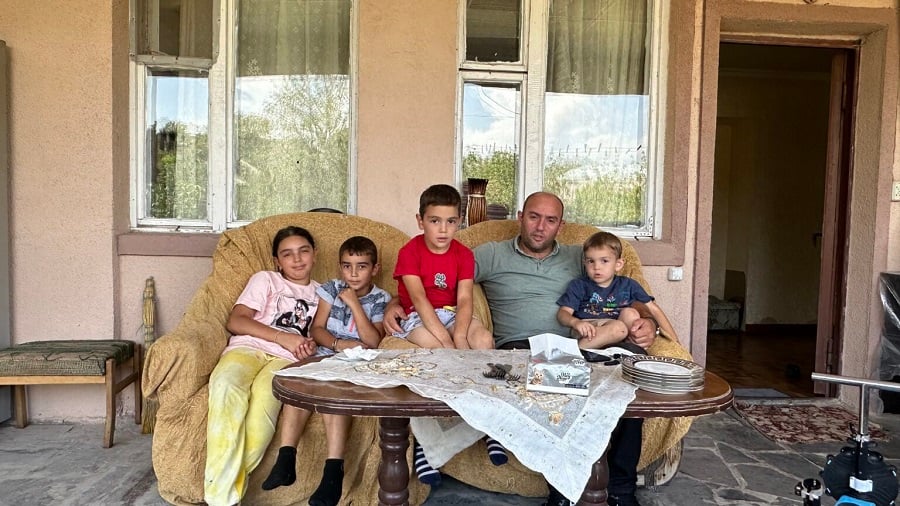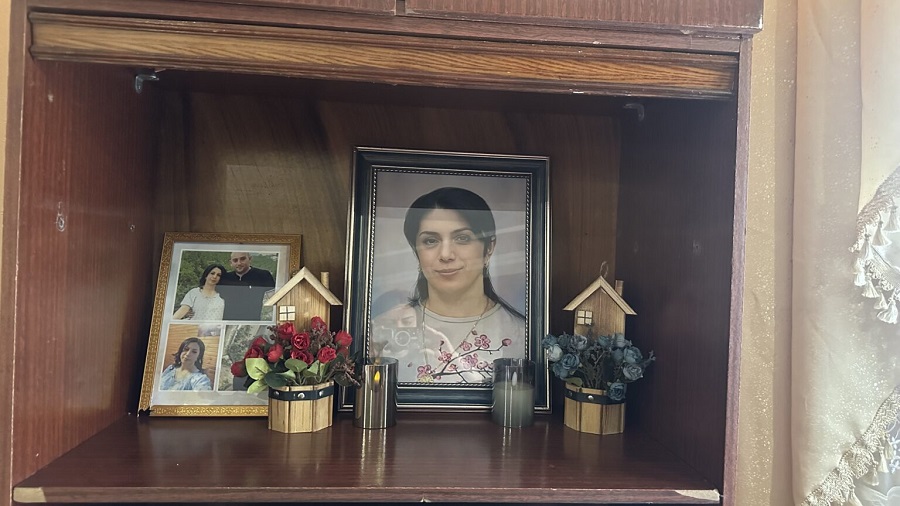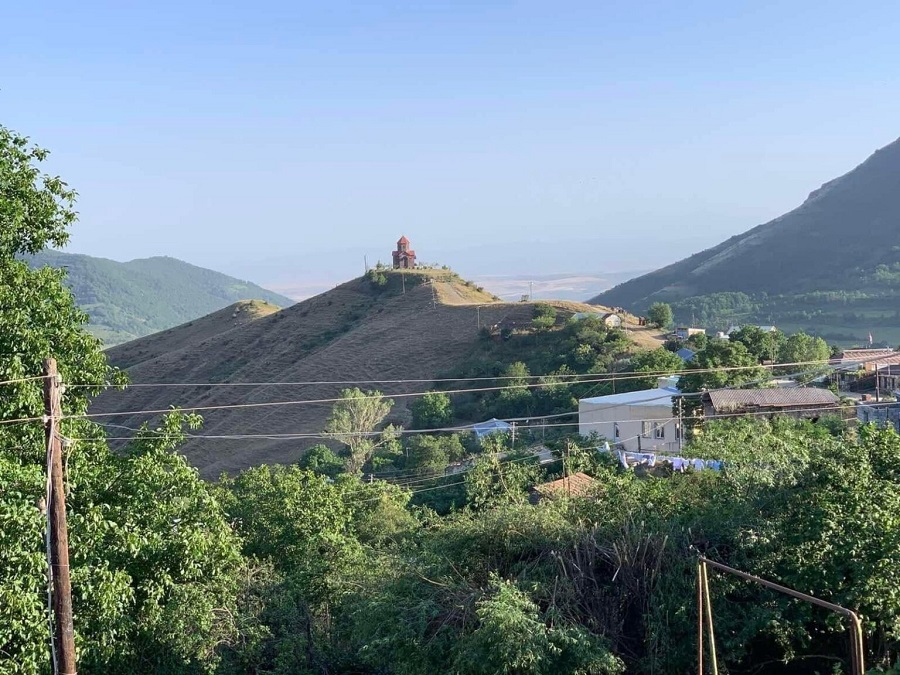The Armenian Weekly. “When children lose their father, they can find solace with their mother, but when they lose their mother, they cannot find solace with their father,” said 38-year-old Artak Vardanyan, capturing his family’s tragedy. A year ago, his wife died in a gasoline warehouse explosion near Stepanakert, Artsakh, and now Vardanyan is raising their four young children by himself.
The Vardanyan family is from Sznek village in the Askeran region of Artsakh. After their village came under Azerbaijani control following the war in 2020, they moved to Stepanakert to rent a home. During the nine months of the blockade of Artsakh that followed, Artak and his wife Narine struggled to find food and necessities for their children. Narine often stood in long lines for bread with the two older children, Zoya and Davit.
On September 19, 2023, when Azerbaijan launched an attack, the family, like many others, searched for fuel and faced the grim reality of being forced to leave Artsakh. On September 25, Narine and Zoya waited in line to get fuel, but no gas stations received gasoline that day. Zoya went home with instructions to wait there, while Narine went to the fuel depot. This was the last conversation between the mother and daughter.
The explosion at the fuel warehouse, a tragic result of the siege and ongoing conflict, claimed the lives of 219 people, with 22 still missing. Narine was among the four women who perished in the blast. At the time of the explosion, Artak was also searching for fuel to evacuate his family.
Read also
After losing his wife, Artak, with his four children and his father, was forcibly displaced alongside the entire population of Artsakh.
After arriving in Armenia, Artak started a difficult journey of moving from one place to another. They have moved five times in the last year and are currently renting a house in the town of Abovyan. They find the house and its garden comfortable, but while it is up for sale, the family can’t afford to buy it.
The family receives 50,000 drams a month from the state for rent and additional support provided to single parents. However, this amount does not cover all their expenses. Artak has struggled to find a steady job, because he needs to take care of his children. Zoya, Davit and Marat start school this fall. 11-year-old Zoya remembered how last year they couldn’t get school supplies under blockade, but they were comforted by their mother.

Zoya, David, Marat and Tigran show their school pens and notebooks. Three of them will attend school in Abovyan this year.
“I learned to cook from my mother—khashlama, potatoes and even barbecue,” she said with sadness. She feels the responsibility to help her father and younger brothers. Her three-year-old brother Tigran sometimes picks flowers from the yard and places them in front of their mother’s picture, which hurts her deeply.
Zoya wishes they could return to Artsakh, but she doubts it will ever be possible. Her father tells her that he faces difficult challenges that others might not understand, and he works hard every day to provide a better future for his children.
Artak fondly remembers his life in his hometown of Sznek, where he was a chess teacher and his wife worked as a village nurse. They farmed, kept bees and had a large vegetable garden. They left all of this behind when they were displaced. After the 2020 war, they continued beekeeping in Stepanakert. Now, starting over for the third time without his wife, Artak’s main concern is finding a stable home for his family.
According to a housing assistance program approved by the Armenian government, around 25,000 families forcibly displaced from Artsakh (Nagorno-Karabakh) are supposed to receive support. The program is being carried out in three phases. The Vardanyan family is eligible for assistance under the first phase, but Artak is skeptical about the program’s effectiveness for their situation. Under the housing program, the Vardanyans are allotted 18 million drams, which is not enough to buy a house outside of Yerevan.
Artak hopes to find work that he can balance with his responsibilities as a caregiver. He is interested in a support program related to beekeeping, a field in which he has knowledge and skills.
The housing program faces many challenges. According to Armenia’s Ministry of Labor and Social Affairs, as of July 15, 285 displaced families from Artsakh had applied to the program. Out of these, only 29 applications have been approved. The remaining applications are still being processed, with some having been rejected due to non-compliance with program requirements. This is despite the fact that 96,696 people displaced from Artsakh have received temporary protection certificates, and 2,075 have applied for citizenship.
Liana Petrosyan, a social activist for displaced Artsakh residents, has strong criticisms of the housing program. She believes the program is “doomed to failure,” because it imposes more rules and demands than it provides help.
Petrosyan noted several issues with the program, including confusing rules and unfair treatment. For instance, the definitions of who qualifies as a “victim” or “survivor” are unclear. Petrosyan uses social media to share accurate information and respond to questions from those affected.
Three months into the program, which launched in mid-June, only 30 applications have been approved, and there is no information on whether these approvals have led to concrete help. According to Petrosyan, displaced people face ongoing problems, with new issues arising regularly. They face long waits for registration, document restoration and citizenship.
Determining previous work experience and obtaining citizenship are challenging due to missing documents, which take both time and money to replace. Many people who had jobs in Artsakh have now lost their employment opportunities. State programs designed to help find work have not been effective. Social support also appears to be unevenly distributed, according to Petrosyan, with different treatment for those displaced in 2020 compared to those displaced in 2023.
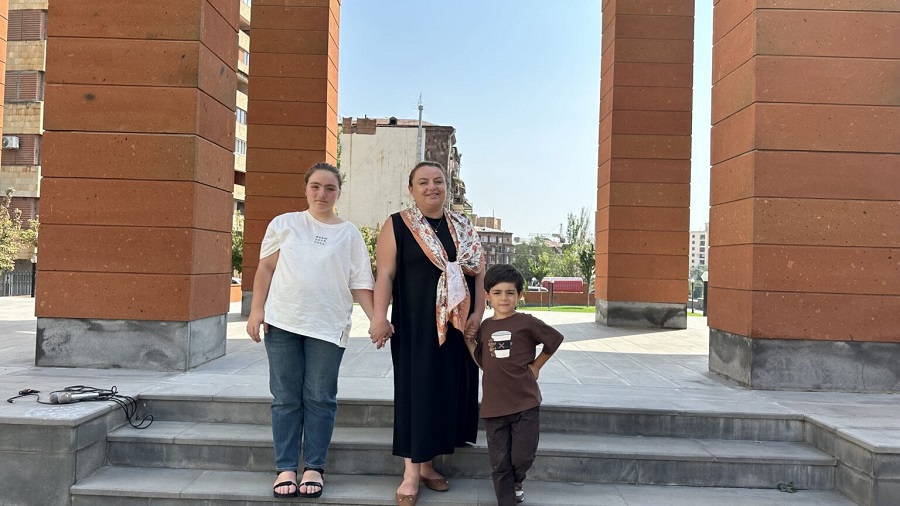
Arevik Harutyunyan with her children, 15-year-old Marianna and six-year-old Aleqsandr, at the Luse Center in Yerevan
Arevik Harutyunyan understands the problems facing forcibly displaced Armenians from Artsakh not only through her work but also from personal experience. The 40-year-old mother of two young children has had a career shift following the 2020 war.
For 17 years, Harutyunyan worked as a lecturer at Shushi Technological University. However, after the 2020 war, she decided to pursue a new profession as a social worker. “After the war, everything changed. With so many internally displaced people, I realized we needed an effective way to assess their needs and provide solutions,” she said. She added that her mission as a social worker is to “help without causing harm.”
The first cohort of social workers from Artsakh received their diplomas under the challenging conditions of the blockade. They were aware of the tough circumstances they would face but never anticipated that they would soon work outside of their homeland.
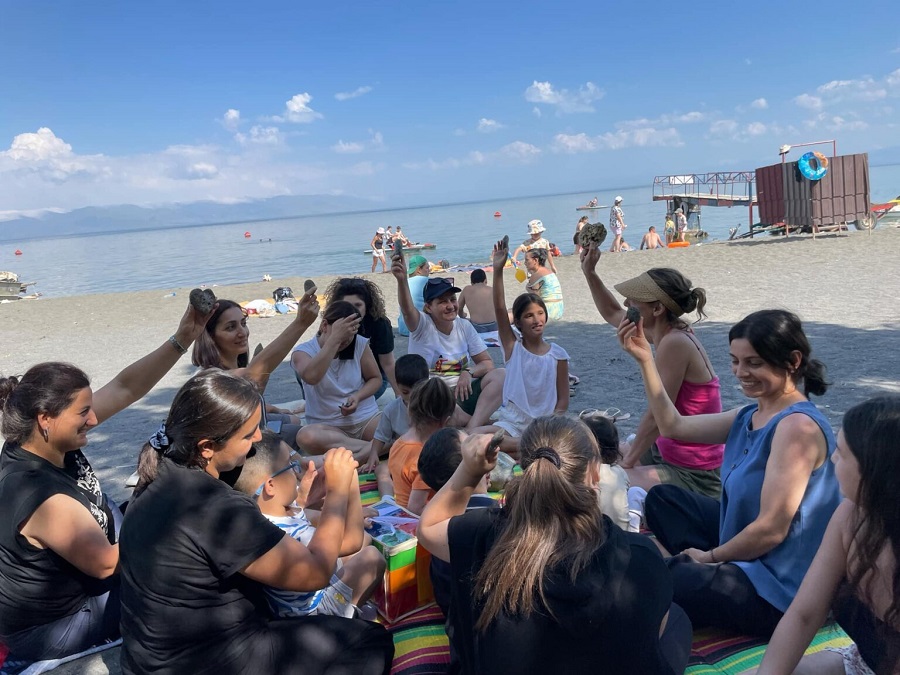
An art therapy class with forcibly displaced children painting rocks, organized by the Lady Cox Rehabilitation Centre where Arevik Harutyunyan works
Harutyunyan works at the Stepanakert Lady Cox Rehabilitation Center, which has been reopened in Yerevan. She is also involved in various short-term programs run by local and international humanitarian organizations, focusing on people with disabilities.
Harutyunyan was pleased to share that Shushi Technological University has reopened in Yerevan, where about a hundred students, mostly displaced from Artsakh, will study this year. The lecturers are also former university staff from Artsakh.
During the 2020 war, 54 students from Shushi Technological University lost their lives. Despite the hardship, Harutyunyan continued teaching for the sake of the survivors. Even under the blockade, the university labs produced wine and cheese, which they left behind.
Reflecting on education challenges facing the displaced, Harutyunyan said that families with students whose tuition fees were covered by the Artsakh government and then by the Armenian government for the short term are unsure whether future fees will be reimbursed. This uncertainty makes it difficult for them to decide whether to continue their children’s education.
The housing program is not affordable for Harutyunyan’s family. Her family rents a home in Yerevan, covered by government funds for displaced persons. Under the government housing program, they are eligible for 12 million drams, which is insufficient to purchase an apartment. Her husband, who worked as a rescuer in the Artsakh emergency ministry during the one-day war and explosion, now works in construction. While both spouses work, they cannot access the mortgage program due to their income level, which is a common issue among the displaced. They cannot move to the outskirts of Armenia in search of work, and their lifelong connection to urban Stepanakert makes agriculture a non-viable option for them.
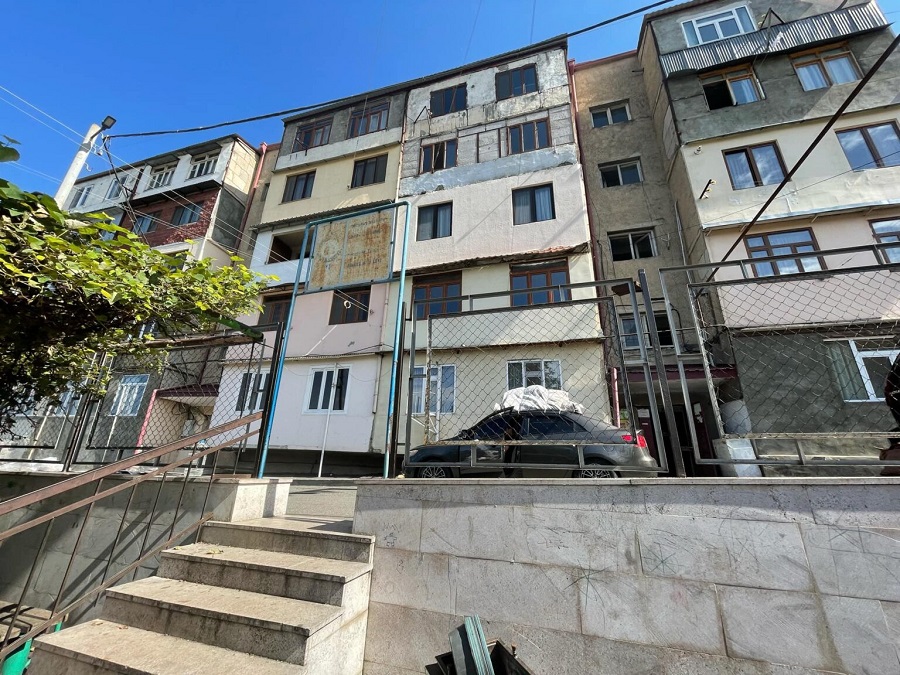
Arevik Harutyunyan’s car parked in front of their building in Stepanakert, the only thing the family could take with them when they had to leave their home
“There are many difficulties,” Harutyunyan said. “We left behind everything we built, and now we’re starting from scratch — buying basic items, household appliances, covering our children’s educational needs and so on.”
As a social worker, Harutyunyan frequently interacts with families in need. Their problems are severe; while Harutyunyan and her husband can work, many families lost their main breadwinners in the wars or explosion or struggle to find employment. Some families also have relatives with disabilities requiring special care.
Yet Harutyunyan says the primary issue for all families is housing. “Many are worried that the government might end the rent support program this December. This could lead to a significant increase in emigration,” she said. Harutyunyan believes that a more realistic housing program could help many displaced people from Artsakh remain in Armenia.
Reflecting on her life in Artsakh, Harutyunyan feels she has left her dreams, heart and soul behind. She recalled organizing a final event with her students titled “Painter, Draw Artsakh” shortly before the forced displacement. The last photo she took was of the church in her village Berdadzor.
Harutyunyan remains hopeful that one day they will return to Artsakh, though she is uncertain about how or when this will happen. “I live and work with that hope every day,” she concluded.
Siranush Sargsyan



















































